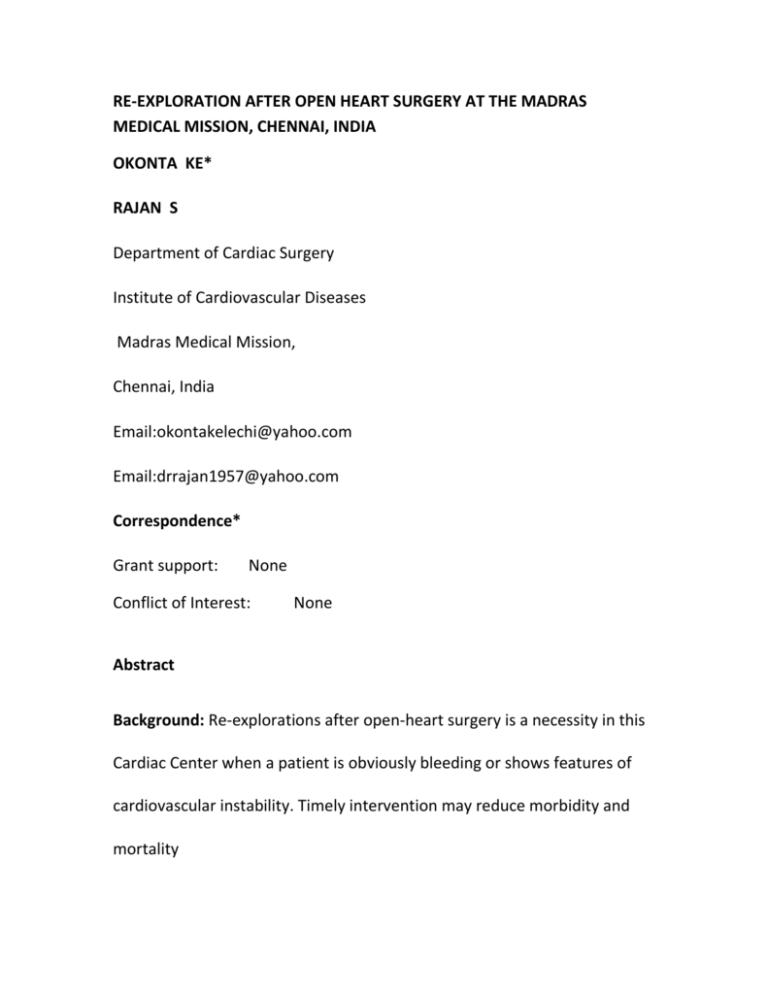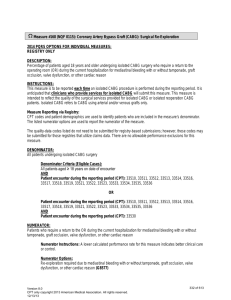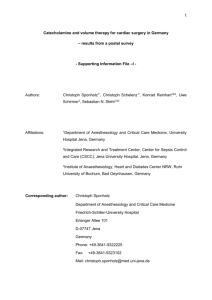re-exploration after open heart surgery at the madras
advertisement

RE-EXPLORATION AFTER OPEN HEART SURGERY AT THE MADRAS MEDICAL MISSION, CHENNAI, INDIA OKONTA KE* RAJAN S Department of Cardiac Surgery Institute of Cardiovascular Diseases Madras Medical Mission, Chennai, India Email:okontakelechi@yahoo.com Email:drrajan1957@yahoo.com Correspondence* Grant support: None Conflict of Interest: None Abstract Background: Re-explorations after open-heart surgery is a necessity in this Cardiac Center when a patient is obviously bleeding or shows features of cardiovascular instability. Timely intervention may reduce morbidity and mortality Objectives: This study aims to correlate the indications with the operative findings for re-explorations after open-heart surgeries as a way of justifying early surgical intervention. Method: Between May2005 and April2011, 10,083 open-heart surgeries were performed in the Adult Cardiac Surgical Unit of the department of cardiac surgery, Institute of Cardiovascular Diseases, Madras Medical Mission, Chennai, India. The demographic data, the initial diagnoses, the types of surgery, the indications for re-exploration, the intraoperative findings, the timing, the estimated blood loss and treatment for the 362 patients who had reexploration were analysed using the Predictive Analysis Soft -ware(PASW)18. Result: Out of the 10,083 patients who had cardiac operation within the period of study, three hundred and sixty two (3.6%) patients had reexploration shortly after the operation. Males were 311(85.9%) while 51(14.1%) were female patients with mean age of 56.7+12.5years .The mean time interval between the primary surgery and the re-exploratory operation was 2.31+1.47hours and the mean chest tube drainage before reexploration was 770.9+28.8ml. Coronary Artery Diseases (CAD) was the initial diagnosis 258 (71.3%) patients and Coronary Artery Bypass(CABG) operation was the initial surgery in 254(70.2%)patients, CABG and valve in 12(3.3%)patients, Valve surgery alone in 70(19.3%) patients, Bentall procedure(homograft aortic root replacement)in 13(3.6%) patients, others such as off-pump coronary artery bypass, Dor procedure(patch restoration of left ventricle by incising the aneurysm without excising it), pericardiectomy and thromboembelectomy in 13(3.6%). The indications for re-exploration were post operative haemorrhage in 283(78.2%) patients, Cardiac tamponade in 41(11.3%)patients, reactionary haemorrhage and cardiac tamponade in 12(3.3%)patients, clots In 20(5.5%) patients, open sternum 5(1.4%) and forgotten foreign body in 1(0.3%)patients. The intraoperative findings in 351(97.2%) patients revealed mediastinal clots and bleeding points, while no active bleeding was seen at re-operation in 11(2.8%) patients. Pearsons Chi-square test between the indications for reexploration and the intraoperative findings was significant (p value<0.001). Conclusion: There is strong evidence supporting early re-exploration in patients after open-heart surgeries, complicated by reactionary haemorrhage, cardiac tamponade and intra-thoracic clots; early reexploration reduced morbidity and mortality. Key words: Re-operation after open-heart surgery, Indications, Early re-exploration, Good outcome, India










